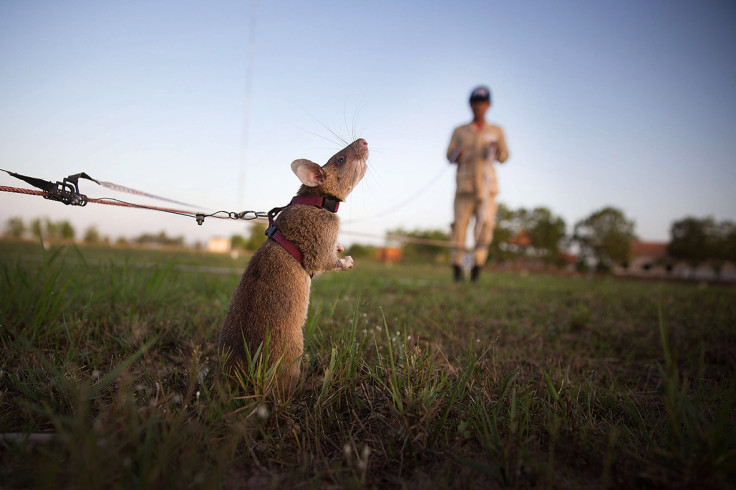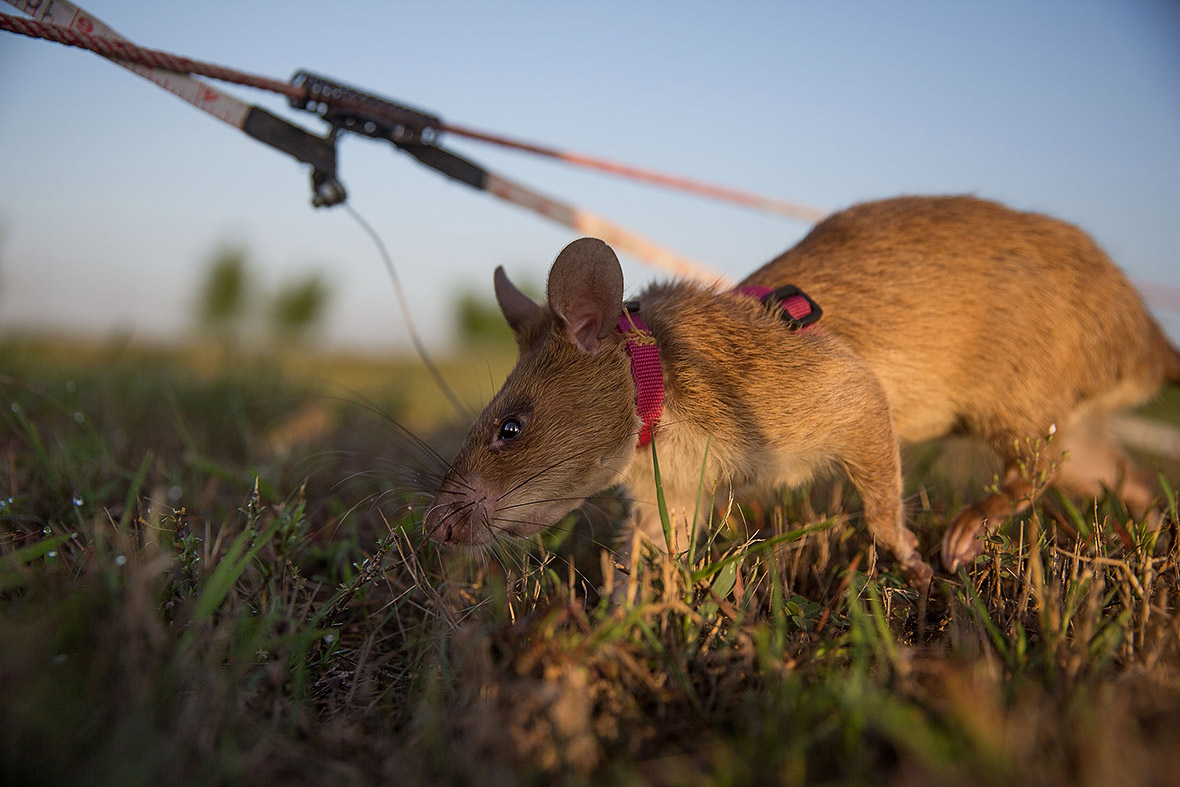Cambodia: Giant rats imported from Africa are trained to sniff out landmines and bombs [Photos]
Giant rats imported from Africa are being trained to sniff out unexploded landmines in Cambodia. Fifteen of the rodents are undergoing training in Siem Reap province, home to the world famous Angkor temples.
Gambian pouched rats, also known as African giant pouched rats, can grow up to 1m (3ft) long and weigh 1.4kg.

The project is the brainchild of Bart Weetjens, founder of APOPO. The Belgian non-governmental organisation began breeding giant rats in 1997 and soon found they could detect not just land mines but tuberculosis in humans, too.
A trained rat can cover 14 times more land than a human. The rats' superior sense of smell means that in just 20 minutes, they can do what it would take a human mine detector up to four days to do. A human deminer has to stop every time the metal detector gives a signal, but often it turns out to be an old coin or piece of scrap metal. The rat only detects explosive (TNT) so ignores all the scrap metal and goes straight to the landmine.
They are much cheaper than human workers – when the rats detect explosives, they are rewarded with a piece of fruit. Using the rodents is far less dangerous, too, as although they are giant rats, they are too small to set off landmine detonators.




The rodents have previously been used to detect landmines in Tanzania, Angola and Mozambique, and they are now being trained in the war-torn south-east Asian country, in conjunction with the Cambodian Mine Action Centre.




As many as three million mines are estimated to be scattered across Cambodia, left over from 30 years of conflict that started in the 1960s. In addition, at least 26 million bombs were dropped on Cambodia during the Vietnam War, many of which remain active.
Around 20,000 Cambodians have been killed by unexploded ordnance since 1979, with 154 killed or injured in 2014.
© Copyright IBTimes 2025. All rights reserved.




















